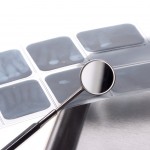
Current understanding of caries is that it results from an imbalance of biofilm flora and activity leading to de- and remineralisation imbalance. This supports a shift from traditional removal of affect tooth tissue to less invasive approaches involving biofilm removal, sealant and remineralisation treatment.
The primary aim of this review was to assess dentists’ and dental therapists’ thresholds for carrying out restorative interventions in adults or children (primary and permanent teeth) for proximal and occlusal carious lesions
Methods
Searches were conducted in the Embase, Medline and Web of Science databases. Observational peer reviewed studies reporting on dentists’ or therapists’ (including students’) thresholds (clinically, radiographically, or using other caries detection tools) for carrying out restorative interventions on carious lesions, for adults or children and in primary or permanent dentitions were considered
Two reviewers independently selected studies and abstracted data study quality was assessed using the Newcastle-Ottawa scoring tool. Random-effects meta-analyses with subgroup and meta-regression analysis were performed
Results
- 30 studies involving 1835 practitioners were included.
- No studies were of high quality, 24 were moderate and 4 low quality.
- The studies dated from 1983 to 2014, 16 studies were published in the past 10 years, three 10-15 years ago and 11 more than 15 years ago.
- 28 involved dentists, 1 included therapists and 2 involved dental students.
- 21 involved general dental practitioners (GDPs).
- 17 countries were represented.
- A majority (15) were conducted on adult teeth.
- A range of approaches was used to present lesion extent and investigate thresholds
- For proximal carious lesions
- Confined to enamel (not reaching the enamel-dentin junction), 21% (95%CI;15%-28%) of dentists/therapists would intervene invasively. This almost doubled in high caries risk patients,risk ratio =1.98; (95%CI; 1.68-2.33)
- Extending up to the enamel-dentin junction, 48% (95% CI;40%-56%) of dentists/therapists would intervene restoratively.
- For occlusal lesions
- with enamel discoloration/cavitation but no clinical/radiographic dentin involvement, 12% (95% CI, 6%-22%) of dentists/therapists stated they would intervene, increasing to 74% (95% CI, 56%-86%) with dentin involvement.
- There was variance between countries but no significant temporal trend.
Conclusions
The authors concluded
Based on the findings of this review and within the data’s limitations (sample representativeness, response bias, and long time period covered), a significant proportion of dentists or dental therapists said they would intervene invasively (restoratively) for carious lesions that were clinically and/or radio- graphically confined to enamel or only minimally extended into dentin. This proportion varied greatly between countries and was further influenced by the individual patient’s caries risk profile. These data are historical, and there is great need to understand the current status and the decision-making process to facilitate translation of research evidence into clinical practice and reduce overtreatment.
Comments
This interesting review suggests the lack of movement in dentists’ treatment philosophy for caries management over time. Although the authors do highlight several important limitations which they address in their discussion and highlight in their conclusion. For those with an interest in evidence-based healthcare the lack of movement is disappointing but not unfamiliar and again the authors highlight work in dentistry that has investigated this. The challenge in changing behaviour is significant as there are many barriers to overcome. For while our understanding of the disease has improved our ability to bring about changes in individual behaviours and systems to facilitate best practice needs further improvement.
Links
Primary paper
Innes NP, Schwendicke F. Restorative Thresholds for Carious Lesions. J Dent Res. 2017 Feb 1:22034517693605. doi: 10.1177/0022034517693605. [Epub ahead ofprint] PubMed PMID: 28195749.
Other references
Original review protocol on PROSPERO
